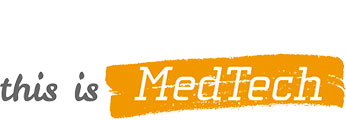In Vitro Diagnostic Medical Devices Directive
Posted on 07.09.2015
Current legislation
The safety and performance of in vitro diagnostic devices are regulated in the EU by the 1998 In Vitro Diagnostic Medical Devices Directive (IVDD). This sets a framework for manufacturers and for authorised representatives who seek to place IVD products on EU market. It aims to ensure that IVD devices comply with stringent standards for quality and safety, and produce reliable data to be used for diagnostic purposes.
The IVDD lays down a series of essential requirements to ensure the efficacy, quality and safety of products. It requires that the safety and health of patients, users, and any third party must not be endangered by proper use of the product, and that any possible product risk, compared with the associated benefit, is acceptable.
The principle of integrated safety applies, which means risk avoidance and risk minimisation in the design and manufacture of the product, protective measures against residual risks, and appropriate information of users. The generally acknowledged state of the art must be applied.
Importantly, the IVDD recognises that IVDs have specific, unique characteristics that demand specific rules and regulations.
Revision of the IVDD
Although the original goals of ensuring the safety of devices and the functioning of the internal market have largely been met by the IVD directive, the current framework is looking more and more outdated.
The existing EU legislation, dating back to the 1990s, has not kept pace with the enormous technological and scientific progress in the past 20 years and like every regulatory regime dealing with innovative products it needs regular revision. The revision also aims to improve international regulatory convergence by adopting principles set by the Global Harmonization Task Force (GHTF).
The proposed revision on IVDs will be in the form of a regulation, and so will have a direct effect in EU member states.
Although some elements will remain the same, the forthcoming regulation promises widespread changes to the IVD landscape in Europe. It will:
introduce new classification rules that divide the broad range of IVD medical devices into different risk classes,
tighten up conformity assessment procedures and introduce new requirements for notified bodies,
reinforce rules for clinical evidence requirements for IVD devices. There would be additional requirements, especially for new devices, to help make the work of laboratories and healthcare professionals easier when selecting new tests,
introduce more requirements for clinical data for the pre-market and the continuous post-market assessment of IVD devices. This includes further development of the European databank on medical devices (Eudamed),
introduce new labelling requirements, such as the development of a unique device identification (UDI) system.
MedTech Europe’s position
IVDs are distinct from other medical technologies in many ways, but perhaps the most important difference is that they never come into direct contact with the patient. Instead, they provide information on a person’s health through the analysis of samples.
Given that the EU legislation aims to ensure the safety of the technology for the patient, the proposed regulation should continue to reflect this difference: unlike other devices or pharmaceuticals, the risk is in the nature of the information being collected by the IVD, not the direct effect of the intervention on the patient.
If these differences are not taken into account, IVD device manufacturers will face an inappropriate regulatory burden, which will inevitably slow innovation and patient access to potential life-saving technology.


